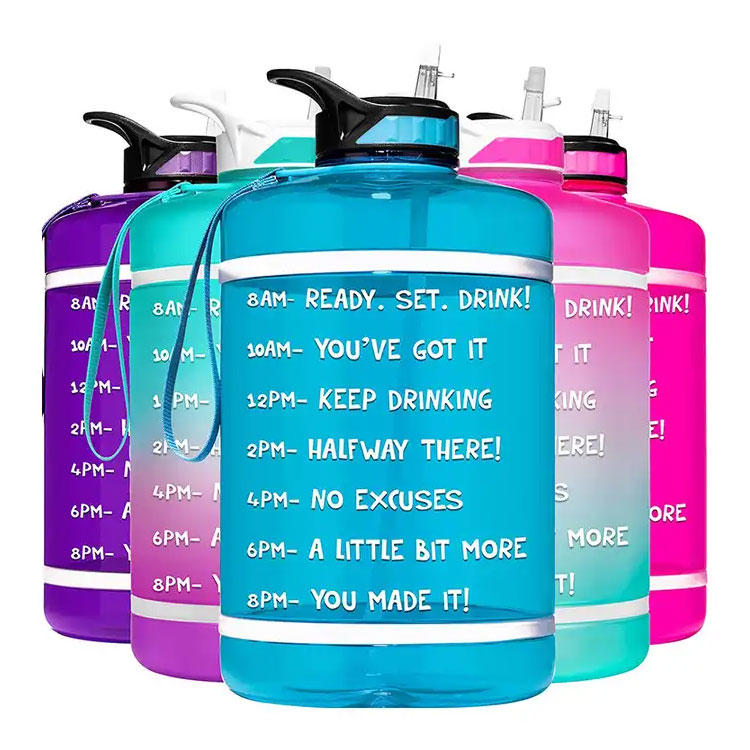Plastic Molding Process
Plastic products such as bottles, barrels, cans, and boxes come in diverse shapes and sizes, serving as essential packaging for various items like food, beverages, medicines, condiments, cosmetics, and more. These plastic containers play a crucial role in our daily lives.
In the production of these plastic products, various plastic molding processes, such as injection molding and blow molding, are utilized. These processes offer distinct advantages and features, allowing for efficient production based on differences in raw materials, processing requirements, yields, and costs.
Extrusion Blow Molding
Extrusion Blow Molding (EBM) is a manufacturing process that involves plasticizing and melting raw materials in an extruder. The molten material is then extruded to form a parison, which is subsequently inflated to create the final product.
This process primarily focuses on unsupported parison processing. The complete molding procedure consists of three key stages: parison formation, parison inflation, and cooling and solidification. Extrusion blow molding stands as a prominent method for producing plastic hollow parts, suitable for a range of polymers including PE, PP, PVC, thermoplastic engineering plastics, thermoplastic elastomers, and various blends. The majority of blow molded products are crafted through the extrusion blow molding technique.

Features of Extrusion Blow Molding
- Excellent plasticizing quality of raw materials
- Relatively simple mold structure, resulting in lower manufacturing costs
- Capability to produce various specifications of hollow products
- Ability to form containers with inserts, containers with handles, and diverse irregularly shaped containers
- Ease of changing product colors, with even dispersion of colors in the raw materials
Injection Blow Molding
Injection Blow Molding (IBM) involves the plasticization and melting of raw materials in an injection molding machine. The molten material is then injected to create a parison, which is moved to a blow mold while still hot.
Products resulting from injection blow molding are primarily small bottles with a consistent shape. Various resins like PVC, PE, PS, PET, and PA can be used for production. This method is commonly employed in packaging for medicines, food, cosmetics, etc. The plastics used for blow molding hollow objects encompass PE, PVC, PP, PS, PET, PC, and PA. HMWPE, in particular, is widely consumed and finds applications in packaging for food, chemicals, and liquid handling.
Features of Injection Blow Molding
- Products exhibit a smooth surface with no burrs, precise dimensions, and excellent stability
- Precise adjustment of product thickness during parison formation
- Particularly suitable for molding rigid plastics, ensuring excellent resin orientation in blow molding
- The resulting product is seamless, showcasing high dimensional accuracy in the neck and thread of the container
- Products have a glossy finish and optimize raw material usage

Stretch Blow Molding
Stretch Blow Molding (SBM) is an advancement based on the aforementioned molding methods, encompassing extrusion-stretch-blow molding and injection-stretch-blow molding (ISBM).
In stretch blow molding, the process involves stretching the extruded or injection-molded parison longitudinally first (using a stretching mandrel or a stretching jig), followed by inflating the molded product. This method enhances the physical and mechanical properties of plastic products as they are stretched both longitudinally and transversely.

Features of Plastic painting process
- 1. Commonly utilized for producing water, juice, and various other plastic products, with PET bottles being a prime example through stretch blow molding.
- 2. Facilitates the production of biaxially oriented products, significantly reducing production costs.
- 3. Enhances container properties, including tensile strength, barrier properties, drop impact, clarity, and top load, leading to improved overall product quality.
Other Molding Methods
Apart from the frequently employed plastic molding methods mentioned earlier, there exist other molding processes such as multi-layer blow molding, compression blow molding, dip coating blow molding, foam blow molding, three-dimensional blow molding, and more. These techniques are employed to create intricate, small-batch plastic products.

Custom Design

Custom Printing
